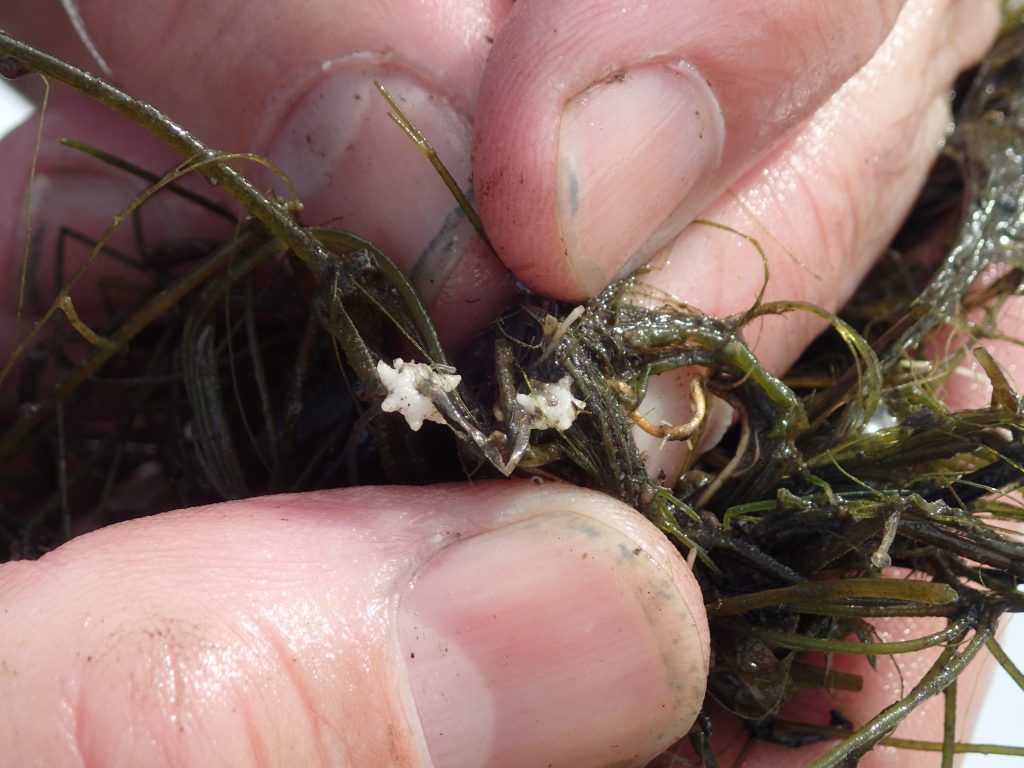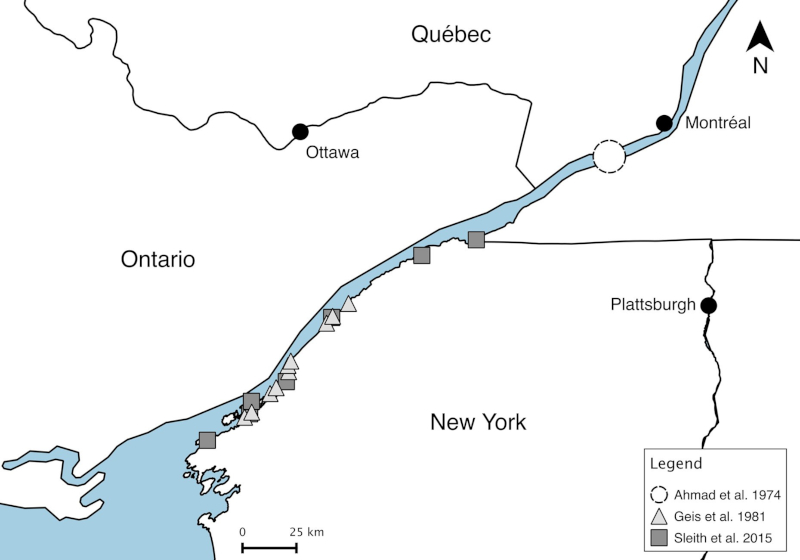Facts About Starry Stonewort
Starry stonewort (SSW) is a macroalgae from the family Characeae that closely resembles a vascular plant. It originated in Eurasia, where it is considered to be an endangered species, and entered the US sometime in the 1970s. It invades lakes, ponds, and slow-moving water bodies wehre it attaches to the sediment using rhizoids, and grows up to 2 meters. (Kipp et al., 2017)
SSW Anatomy
SSW’s body is comprised of a chain of nodes and internodal segments, which function as its stem. Whorls of 5-7 branchlets extend from each node, with bract cells growing off of branchlets, giving them a forked appearance.
Color varies depending on the time of year, starting as a bright green and changing to a greenish-brown as the season progresses.

SSW has both male and female individuals and produces unique reproductive organs, dependent on the individual’s sex, at branchlet nodes. For males, this means orange antheridia, while for females it means bright red to light green oogonia. However, only males have been found in North America. SSW can also reproduce asexually from fragments.

In order to anchor themselves to the sediment, SSW uses clear, root-like rhizoids. At the nodes of these rhizoids, white, star-shaped bulbils are produced. It is from these bulbils that the name “starry” stonewort is derived.

The bulbils are also a distinguishing trait, as no native macroalgae has them. SSW is also larger in comparison to other macroalgae due to longer branchlets. Additionally, SSW lacks the skunky smell of native macroalgae from the family Chara, also known as musk-grasses.
In this video you can learn to identify starry stonewort (Nitellopsis obtusa) and distinguish it from several look-alike species.
A production of the Wisconsin Lakes Partnership.
Where did it come from?
Starry stonewort is native to parts of Europe and Western Asia. The first occurance of SSW was documented in 1978 in the St. Lawrence River between New York (NY) and Ontario, Canada. Ballast water is the prime suspect for entry and subsequents spread throughout the Great Lakes basin (GLB).

Rake toss sample showing nearly 100% SSW, Keuka Lake Outlet, Penn Yan, NY
Why is it a problem?
Like many invasive species Nitellopsis obtusa spreads very quickly especially in disturbed areas. It can regenerate from very small fragments and can be spread between water bodies on vehicles and boat trailers.

A bed of Starry Stonewort, Keuka Lake Outlet, Penn Yan, NY
Left unchecked SSW grows into great “meadows” or pillows that cause harm to natural environmental systems and make fishing, swimming or boating nearly impossible. This in turn can potentially result in economic impacts to areas near infested
